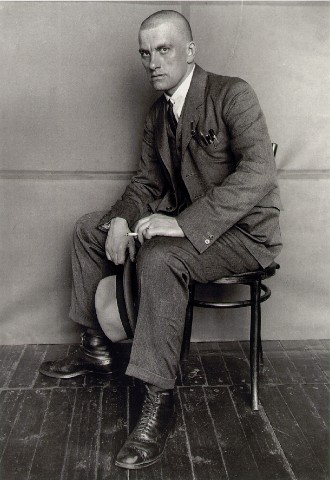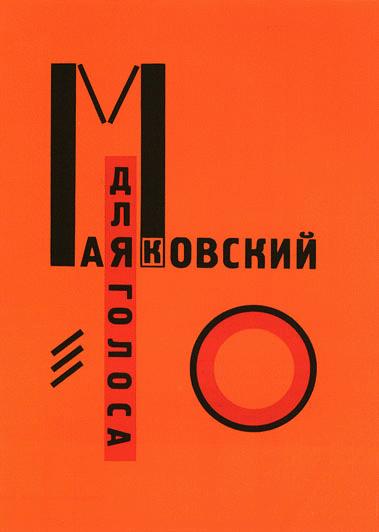At some point, the spread of literacy in any given culture has an impact on that culture’s poetry, an instance in which the formal embellishments that helped to separate scribes from the masses gives way to a more casual, plain-spoken method. In Greek, I believe that it is Cavafy who first begins to write in the demotic. In
In
(One of the great ironies of this sort of dismissal is that a Joseph Brodsky, whose solution was a return to the formal precision of pre-Soviet poetics & to abstain from collaborating with the aesthetic bureaucrats of his time, easily fell into the hands of the same sort of apparatchiks once he was able to come west. An even greater irony – the new critical roots behind Brodsky’s later School o’ Quietude friends could be traced back¹ to the Russian Formalists & their principle source of inspiration, old “Cloud in Trousers” Mayakovsky himself. Now that the old
Mayakovsky’s open style, which from a distance sometimes looks like a rough precursor of Williams (as, in fact, does Hikmet’s), found echoes later in the work of Yevgeny Yevtushenko and Andrey Voznesensky, poets of the 1960s just old enough to parlay their own declamatory poetics into world renown through a loose association with the Beats of North America. But neither of these aesthetic liberals carried forward any sense of Mayakovsky’s futurism and their work-within-the-system literary politics struck many of their juniors as thoroughly compromised, especially against the likes of absolute oppositionalists like Brodsky. It would take another generation for formal innovation to really return to Russian poetics, which happily translators such as John High, Lyn Hejinian & Kent Johnson have been making available in English. When, last year, Evgeny Pavlov translated, and Ugly Duckling Press published, Arkadii Dragomoshchenko’s Chinese Sun, the novel was less than ten years old.
But good Mayakovsky translations remain hard to find, especially since for so long a major source of his work in English was a series of books from Progress Publishers, the English-language arm of the Soviet state publishing agency. It’s not an accident that Larry Fagin listed Mayakovsky among his Neglectorinos. One volume that is worth tracking down is a boxed set published six years ago by MIT Press entitled For the Voice, which reprints Mayakovsky’s 1923 collaboration with El Lissitzky. It’s only a 60-page book, but MIT published it in a facsimile edition in Russian, an English parallel edition translated by Peter France, and joined these two with a fat anthology of critical pieces (plus a few excerpts by Mayakovsky & Lissitzky). This third volume is divided further into three parts, one dealing with accounts of hearing Mayakovsky reading, the second to the poems themselves, the third to the role of book design in Futurist art. The most valuable pieces here are the memoirs by Mayakovsky’s peers (including one by the Burliuks and an interview with Lissitzky), plus a translation of the end passage of Mayakovsky’s own How are Verses Made? which is even harder to find than For the Voice. G.M. Hyde’s translation, published in 1970 in the Grossman Publishers /
The poems in For the Voice are not necessarily Mayakovsky’s best or most representative, tho they do show many of the poet’s different sides. To hear Mayakovsky read three of his poems (and another three read by his lover Lily Brik), go to his page on PENNsound. You don’t need to know Russian to get a sense of his style.
Lissitzky’s cover for Dlia golosa (For the Voice) 1923
¹ Via Wellek’s formative study at the Prague School of Linguistics under a still-young Roman Jakobson.
² The same series through which many in my generation first read Olson’s Mayan Letters or carried around Zukofsky’s “twin” poems that conclude “A,” “A’’ 22 & 23 or read Henri LeFebvre’s Dialectical Materialism.







